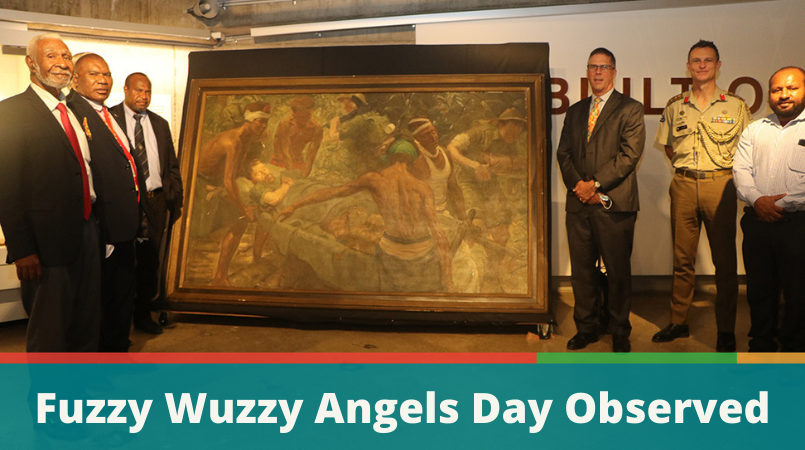
November 3, officially recognized as the Fuzzy Wuzzy Angels Day on the PNG Calendar, was observed throughout PNG and acknowledged by the National Museum & Art Gallery and Ministry of Culture and Tourism.
In 2009, the Government declared that 3rd of November, shall be observed in commemoration of the services of carriers and stretcher bearers during World War II.
Speaking at the commemoration event, Minister for Culture and Tourism, Minister Leonard said while the Second World War was a global event, its local experience brought the nations and peoples of Australia and Papua New Guinea together, making it our shared history.
“Australian soldiers fought alongside the men of the Papuan Infantry Battalion and the Pacific Islands Regiment, whom we honour on Remembrance Day every July. But today has a special significance, as we honour the thousands of non-uniformed Papua New Guineans who helped the Australians and their allies prevail, as labourers and carriers throughout wartime Papua and Guinea, but most memorably carrying supplies in and wounded soldiers out from the Kokoda Track.”
Director of the National Museum, Dr Andrew Moutu said that plantation workers from across the country were conscripted during the war to provide support services to the Australian defence forces.
“This work included loading and unloading supply ships, labour for roads, airfields and other public works, and famously their work on the Kokoda Track and at other places of battle, where they became orderlies and stretcher bearers assisting with the carrying of injured servicemen to first aid posts and field hospitals. These carriers showed great compassion in looking after their wounded charges with extreme care and tenderness.”
“The gratitude of the servicemen was immortalised in the famous photo taken on Christmas Day 1942 by war photographer, George Silk of Australian soldier Dick Whittington being helped along the Buna Road by Raphael Oembari. And in the poem Fuzzy Wuzzy Angels written by Sapper Bert Beros, while he was encamped near the wartime village of Uberi on the Kokoda Track,” Dr Moutu added.
The National Museum & Art Gallery has had a long association with the Australian War Memorial and received the painting titled ‘Native bearers carrying wounded in New Guinea’, by celebrated Australian artist and Archibald Prize winner, Sir William Dargie, in 1982.
Dr Moutu advised that the painting has been removed from long term storage and that after restoration works it is hoped that it will be on public display in a new World War II gallery that the museum has in planning.
“Dargie’s paintings are world renowned and he holds the record for winning the Archibald prize 8 times for his portraits. He was the Australian official war painter in 1941/42.”
He also expressed his gratitude to the Australian High Commissioner, Jon Philp, for the long-term support by the Australian War Memorial for the loan of the painting.
Through the PNG-Australia Partnership, Australia supports the National Museum to manage, protect and conserve military heritage and historical artefacts in Papua New Guinea and across the Kokoda Track.
The painting will remain on display at the National Museum and Art Gallery for this week only before undergoing restoration works.
